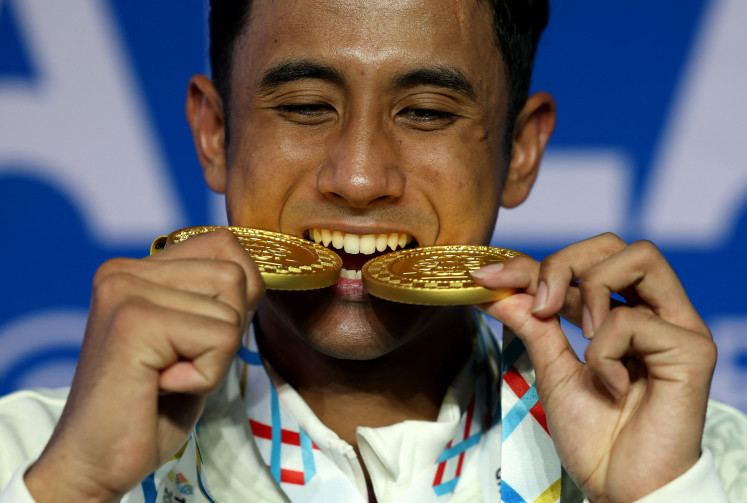Popular Reads
Top Results
Can't find what you're looking for?
View all search resultsPopular Reads
Top Results
Can't find what you're looking for?
View all search resultsThe power of women’s soccer
While women’s soccer continues to progress, Indonesia seems to have missed the boat.
Change text size
Gift Premium Articles
to Anyone
O
ver the weekend, the world crowned Spain the new women’s soccer champion after it defeated England 1-0 in the FIFA World Cup final match. The Iberian side’s title came 13 years after it triumphed in the men’s competition, which by any measure is more popular.
But the FIFA Women’s World Cup is no less entertaining or thrilling than its older, male counterpart. This year’s contest, cohosted by Australia and New Zealand, was full of drama that easily rivaled the men’s tournament, ranging from the early exit of defending champion the United States to the high spectator turnout.
There had been fears that the biggest-ever Women's World Cup, featuring 32 teams, up from 24 four years ago, would dilute the spectacle in Australia and New Zealand. But the end result exceeded expectations, and the tournament has been regarded as a big success.
Even before the quarterfinals ended, nearly 1.4 million people had gone through the turnstiles, making it the best-attended Women's World Cup in history.
When cohost New Zealand beat former champion Norway for its first ever World Cup win, a national record of over 42,000 people packed Eden Park in Auckland. On Australian turf, matches drew bumper crowds as the nation fell in love with its team, the Matildas, as they made front- and back-page news.
Australia’s best World Cup run in history came to an end in the semifinals with a 3-1 loss to England in front of more than 75,000 spectators in Sydney. The tournament itself smashed all television records in Australia. Some 11.5 million people tuned in at some point out of a population of 25 million.
While standards have improved on the pitch and interest is at an all-time high, there remains a huge financial disparity between men's and women's soccer. This year, the prize money for the women’s competition was a record US$110 million, but it was still only a quarter of the winnings in last year’s men’s tournament in Qatar.
FIFA says it is committed to equality, but its boss Gianni Infantino came under fire on Friday when he said that women should "pick the right fights" to "convince us men what we have to do".
Sadly, the pay gap is not the only gender-related problem to solve.
After Spain’s triumph on Sunday, Spanish soccer chief Luis Rubiales gave midfielder Jennifer Hermoso an unsolicited kiss on the lips. Rubiales is reportedly set to quit his post following global condemnation, while FIFA has taken action against him for alleged violations of its disciplinary code.
While women’s soccer continues to progress, Indonesia seems to have missed the boat. The country has abundant talent but lags behind Southeast Asian neighbors the Philippines, Vietnam and Thailand, which have all played in the women’s World Cup. The first two qualified for this year’s tournament.
Vietnam and Thailand are the dominant players in the region, winning six and five gold medals, respectively, since women’s soccer became a medal event in the Southeast Asian (SEA) Games in 1985. Indonesia has never won a medal at the event and did not take part in it at the most recent SEA Games in Phnom Penh in April.
Simply put, Indonesia has not been serious about developing women’s soccer. Back in the 1980s, the Soccer Association of Indonesia (PSSI) approved a top-level invitational competition for women called Galanita, but it did not last long. Then, in 2019, the PSSI organized the Liga 1 Putri top-tier league for women, but it was discontinued as a result the COVID-19 pandemic and has yet to resume. Its future remains uncertain.
The success of the World Cup in New Zealand and Australia is proof that we should encourage the PSSI, under Erick Thohir, to develop the sport with more urgency. Resuming our women’s league would be a good start on our long journey to become a force to be reckoned with in the sport.











